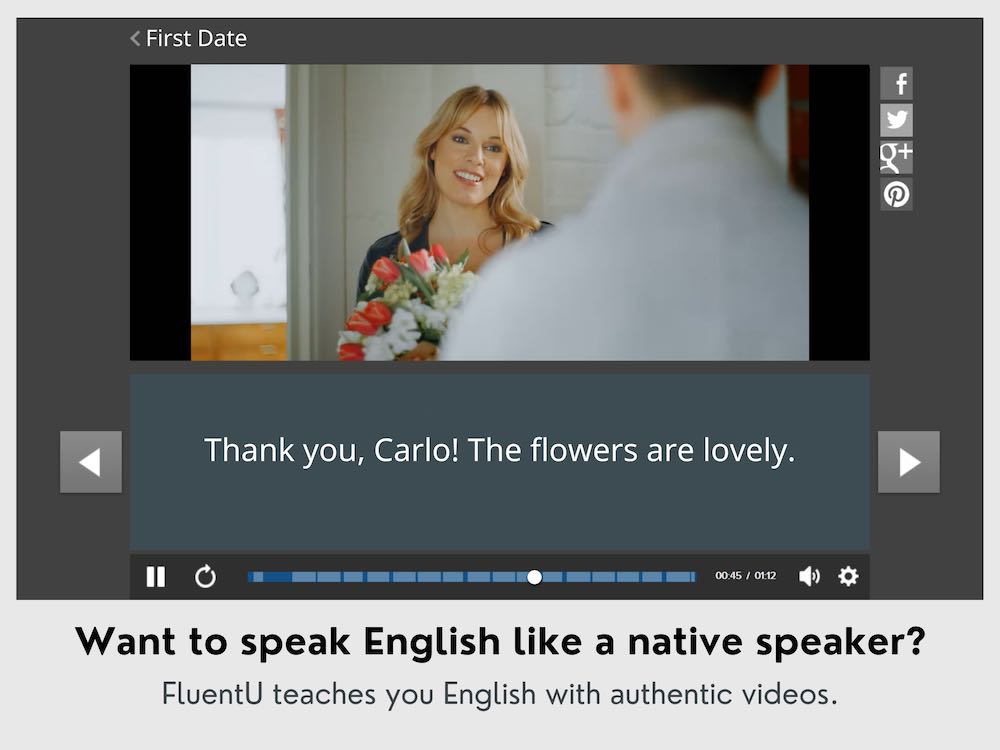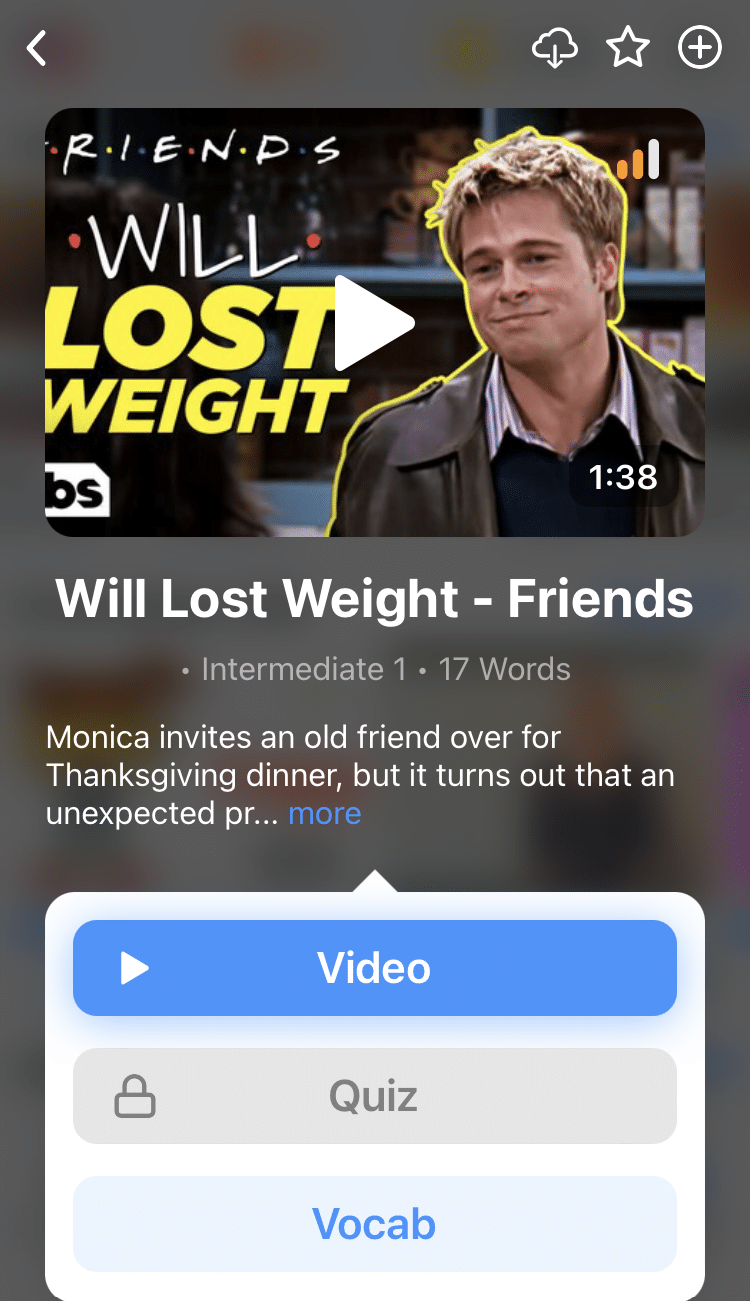
The Storyteller’s Guide to the English Preterite (Past) Tense
In English, we often use the past tense to talk about our lives: the things we did, the things we liked or the things that happened to us.
If you want to tell a story about yourself, talk about your childhood or ask somebody about their life, you’ll need the English preterite (simple past) tense.
Do you want to learn how to speak confidently in the English preterite tense?
Then read on!
Contents
- Tenses: A Short Introduction
- When to Use the English Preterite Tense
- How to Use the English Preterite Tense
- Pronouncing the English Preterite Tense
- Other Forms of the English Past Tense
- How to Master the English Preterite
- And One More Thing...
Download: This blog post is available as a convenient and portable PDF that you can take anywhere. Click here to get a copy. (Download)
Tenses: A Short Introduction
So what are tenses?
As you may already know, the English language has multiple forms of the same verb.
For instance, “loving” and “loved” are different forms of the verb: “love.”
The verb form that we use is an important clue to the “time” that we’re talking about. It tells us if we’re talking about the past, present or future.
Past, present and future are the three most important “times” in English. Each of these can be further divided into other categories—such as the present continuous or the future perfect—but let’s stick to the basics for now.
If we’re talking about something that has already happened (especially a long while ago), we use the past tense.
She went to the store today.
We ate pancakes for breakfast.
I used to ride my bike a lot.
If we’re talking about something that’s happening right now, something that we do frequently or something that’s generally true, we use the present tense.
I attend art class twice a week.
She is walking to the library.
He has blue eyes.
Finally, if we’re talking about something that will or may happen in the future, we use the future tense.
Tomorrow, she will visit her relatives.
I am going to eat pizza tonight.
They will arrive soon.
Now, let’s try to understand the English preterite in detail!
When to Use the English Preterite Tense
The English preterite is used whenever we’re talking about an action or an event that has already taken place and has been completed.
For example:
I ate an apple. (The action of eating the apple is already over.)
He married her a few months ago. (The event of getting married has already taken place.)
So if you’re unsure about which tense to use, ask yourself: is the event already completed? If the answer is yes, then you’ll likely need to use the English preterite.
Moreover, in addition to the verb form, sentences in the past tense will often have a time word, which can be a clue to tell you that the action happened in the past.
Look out for some of the following words and phrases that can indicate the preterite tense:
Yesterday
Last night/week/month/year
A few days/weeks/months/years ago
A long time ago
A while ago
In the past
Before
How to Use the English Preterite Tense
Now that we know when to use the English preterite, let’s look at how.
The conjugation rules are very simple:
Conjugating Regular Verbs in the Preterite Tense
For most regular verbs, you add an “-ed” as a suffix to the original verb.
Play → played
I played badminton with Sheila yesterday.
Watch → watched
We watched the game last week.
Dream → dreamed
She dreamed about her mom last night.
Certain verbs have their own conjugation rules.
If a regular verb ends in e, you just need to add “-d” instead of “-ed.”
Agree → agreed
I agreed with everything she said.
Lie → lied
He lied to us for three years.
When verbs end with a consonant + y, the “y” changes to an “i” and you then add “-ed.”
Marry → married
She married her best friend two years ago.
Bury → buried
The treasure was buried on the beach in 1571.
Conjugating Irregular Verbs in the Preterite Tense
For irregular verbs, you’ll have to memorize the conjugations.
Here’s where flashcards can be useful. Make yourself a flashcard deck with the present tense verb on the front and the preterite tense conjugation on the back.
Here are a few irregular verbs to get you started:
| Present Tense | Past Tense | Example |
|---|---|---|
| Is | Was/were | She was/we were late to the meeting yesterday. |
| Have | Had | We had macaroni and cheese for dinner last night. |
| Do | Did | We did yoga last Tuesday. |
| Make | Made | I made dinner for everybody last Christmas. |
| Go | Went | They went to Italy two years ago. |
| Come | Came | I came to the United States in 1994. |
| Begin | Began | The show began five minutes ago. |
| Drive | Drove | Last summer, I drove to California. |
| Eat | Ate | They ate four pizzas! |
| Run | Ran | Last year, I ran a marathon. |
There are also some irregular verbs that don’t change at all. Other verbs have the same spelling in the past but are pronounced differently.
Cost → cost
I bought a coat yesterday. It cost $400.
Read → read (You can hear both pronunciations at this link.)
She read 20 books last year.
It might be difficult to remember all the conjugations in the beginning, so make a list of verbs as you encounter them, or refer to a dictionary or look up their conjugations online whenever you’re in doubt.
Conjugating the Preterite Tense in the Negative and Interrogative Forms
In English, we use the phrase “did not” (or the contraction “didn’t“) to indicate the negative form. The main verb stays exactly the same, fo example:
You did not finish the project on time.
She did not go to the party last night.
Similarly, the interrogative (question) form is indicated with a question mark at the end of the sentence and the same word did.
Frequently, questions in the past tense use the following construction: “did + subject + verb.”
For example:
Did you finish the project on time?
Did you go to the party last night?
Pronouncing the English Preterite Tense
English pronunciation can be tricky as it doesn’t always abide by the rules.
The “-ed” suffix at the end of the regular verbs can be pronounced in a few different ways.
The best way to memorize the pronunciation of these words to expose yourself to as much as real-life English as possible. You can do this by listening to English media and looking up the pronunciation of new words as often as you can.
However, there are also some rules that can help you remember your pronunciation:
When “-ed” Sounds Like “d”
Sometimes, the preterite tense will sound just like the present tense verb, but with a “d” at the end.
This happens when your verb ends in a vowel or voiced sound such as l, v, n, m, r, b, v, g, w, y or z.
Save → saved (sounds like savd)
Call → called (sounds like calld)
Worry → worried (sounds like worryd)
When “-ed” Sounds Like “t”
At other times, the “-ed” will make a sound like an English “t.”
This happens when the present tense form of the verb ends with a voiceless sound such as p, k, s, ch, sh, f, x or h.
Ask → asked (sounds like askt)
Fix → fixed (sounds like fixt)
Talk → talked (sounds like talkt)
When “-ed” Sounds Like “id” or “ed”
Finally, sometimes the “-ed” at the end of a word will add a whole new syllable, that sounds like “id” or “ed.”
This happens if the original verb ends in “t” or “d.”
Accept → accepted (sounds like accept-id)
Need → needed (sounds like need-id)
Decide → decided (sounds like decide-id)
Other Forms of the English Past Tense
The preterite isn’t the only way to talk about the past tense in English! English also has three other forms of the past tense:
- Past Perfect: We usually use this tense to refer to an event that was completed before another event happened. The verb is usually preceded with “had.” For example: “They had just finished the work when Mary arrived.”
- Past Continuous: We use this tense to talk about an event that’s already complete, but as though it were still happening in the past. For example: “I was painting until I got interrupted.” The action of “painting” is complete in the present, but we’re talking about the time in the past when it was still happening.
- Past Perfect Continuous: Finally, we use this tense when we’re talking about an event that was still going on, until something else took place. For example: “We had been making good progress with the project until the police arrived.”
Once you learn the English preterite, you can move on and learn these other, more complex tenses.
How to Master the English Preterite
Here are some ways you can get yourself talking and hearing about the past in English, so that you can become a master of the English preterite:
- Write in your diary: Get a notebook and write about the events of your day in the past tense. You could write about what you did, what you ate, where you went and so on. It’ll not only help you learn the past tense, but also improve your writing skills.
- Tell stories to your friends: Make a note of these things that happened today and talk about them with your friends or family. Perhaps a coworker said something funny, or you read a thought-provoking story. Either way, try describing the event in your own words, in the preterite tense.
- Watch authentic videos: When learning the past tense, it can be very helpful to watch movies or other videos with flashback scenes or any character telling their origin story. That way you see how the past tense is used in the context, like on the videos you’ll find on a program like FluentU.
FluentU takes authentic videos—like music videos, movie trailers, news and inspiring talks—and turns them into personalized language learning lessons.
You can try FluentU for free for 2 weeks. Check out the website or download the iOS app or Android app.
P.S. Click here to take advantage of our current sale! (Expires at the end of this month.)

- Convert the present to the preterite as a mental exercise: Take five minutes, and try to convert present tense sentences into the past tense. For instance, “I am reading a book” becomes “I read a book” and so on.
- Solve exercises online: The internet is rife with free resources that can help you improve your grammar skills. For instance, this exercise on Lingolia will test you on the different forms of the past tense. This one on English Club will test you on just the preterite (simple past).
The English preterite is pretty easy to learn, and it has many uses, both in speaking and writing.
Once you master it, conversations become much easier and more fun. The more you use it, the more confident and fluent you’ll become.
And don’t be afraid of making mistakes. Rather, learn from them and keep at it.
Happy learning!
Download: This blog post is available as a convenient and portable PDF that you can take anywhere. Click here to get a copy. (Download)
And One More Thing...
If you like learning English through movies and online media, you should also check out FluentU. FluentU lets you learn English from popular talk shows, catchy music videos and funny commercials, as you can see here:
The FluentU app and website makes it really easy to watch English videos. There are captions that are interactive. That means you can tap on any word to see an image, definition, and useful examples.
For example, when you tap on the word "searching," you see this:
Learn all the vocabulary in any video with quizzes. Swipe left or right to see more examples for the word you’re learning.

FluentU helps you learn fast with useful questions and multiple examples. Learn more.
The best part? FluentU remembers the vocabulary that you’re learning. It gives you extra practice with difficult words—and reminds you when it’s time to review what you’ve learned. You have a truly personalized experience.
Start using the FluentU website on your computer or tablet or, better yet, download the FluentU app from the iTunes or Google Play store. Click here to take advantage of our current sale! (Expires at the end of this month.)











